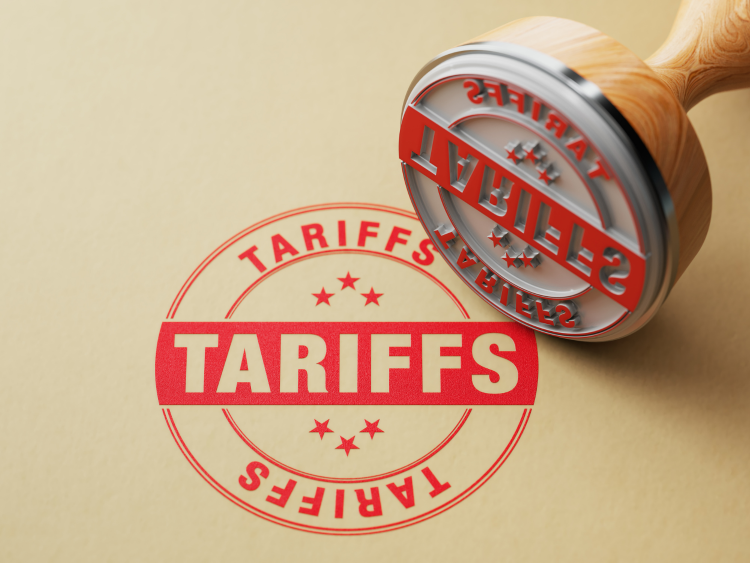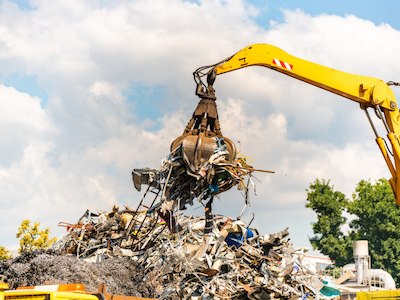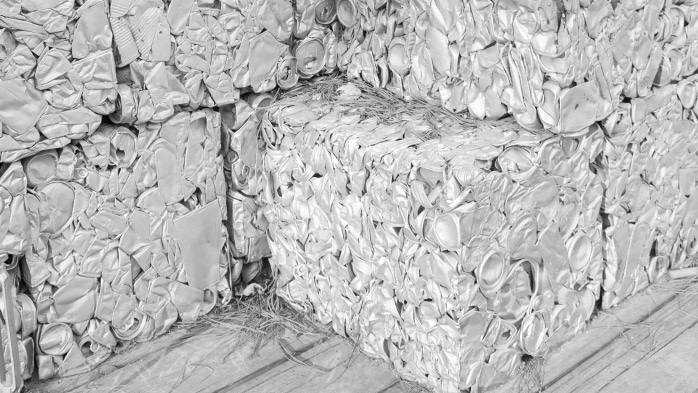Aluminum Scrap Markets

February 20, 2025
New U.S. tariffs on aluminum: A crackdown or just chaos?
Written by Gabriella Vagnini
The latest round of tariffs on aluminum and steel isn’t just about stopping direct imports, it’s about shutting down the backdoors that have let foreign metal, especially from China, slip into U.S. manufacturing through other countries. The new rules focus on where the metal was originally smelted and cast, not just where the final product was made. That’s a big deal, and it’s got serious implications for the auto industry, construction, aerospace, and beyond.
But here’s the problem, how do you actually prove where the metal came from?
What’s being targeted?
The real target here looks to be China-sourced metal that gets processed somewhere else, like Mexico or Canada, before landing in the U.S. It’s not just about raw materials anymore. Now, auto parts, wiring, fasteners, tubing, anything that’s been made with that metal, could get hit too.
The U.S. tried to crack down on this under Biden, putting rules in place that said aluminum and steel had to be melted and poured in the U.S., Mexico, or Canada to avoid tariffs. But tracking metal origins turned into a logistical nightmare. Once it’s melted, cast, or mixed into another product, tracing where it actually came from is nearly impossible. That system fell apart fast.
Now, the only way to really enforce this is by making manufacturers prove their sourcing, which means more paperwork, audits, and tracking. Think certifications, supply chain audits, and maybe even blockchain tech. But even that doesn’t fully solve the problem. If a manufactured part contains scrap metal, it gets even murkier. Scrap comes from multiple sources, mixed together in the melting process, making it almost impossible to track back to a specific country.
So if you can’t trace the metal, how do you enforce tariffs on it?
Why this matters for the auto industry
Automakers have relied on North America’s low-cost, integrated supply chain for years, with Mexico acting as a major hub for casting, rolling, and component manufacturing. But if the underlying aluminum and steel come from China, even if Mexico is where the final manufacturing happens, those products could now face tariffs.
That means:
- Cost increases for auto parts – If Mexican suppliers are using Chinese aluminum, tariffs could force them to switch sources, renegotiate contracts, or simply pass costs down the line.
- Supply chain disruptions – Automakers might have to rethink sourcing or risk higher prices on everything from structural components to small fasteners.
- Uncertainty on compliance – Will an automaker have to verify where every single sheet, coil, and billet of aluminum originally came from? That’s a logistical nightmare, especially when Mexico has relied on imported base metals for years.
The tariff enforcement problem
This is where things get tricky. Tariffs don’t mean much if they can’t be enforced.
A certificate of origin sounds like a good solution, but it only works for raw materials and simple goods. Once metal is melted, cast, or recycled, tracking its original source gets complicated.
Assaying (testing metal for its composition) can tell you what’s in it, but not where it originally came from.
Scrap metal makes things even harder. It gets collected from multiple sources, melted down, and reused in new products, by the time it reaches an automaker, its original country of origin is impossible to determine.
So what’s the solution? Right now, it seems like tariffs will either have to rely on self-reporting and audits, or they’ll be inconsistently applied, which could lead to loopholes and workarounds.
What aluminum products are affected?
The new tariffs don’t just hit raw aluminum, they also target semis and processed aluminum products. Here’s what’s on the list:
- Unwrought aluminum – Raw aluminum used for manufacturing
Aluminum, not alloyed (HTSUS 7601.10)
Aluminum alloys (HTSUS 7601.20) - Semi-finished aluminum products – Materials used in everything from auto parts to packaging
Aluminum bars, rods, and profiles (HTSUS 7604)
Aluminum wire (HTSUS 7605)
Aluminum plates, sheets, and strip (thickness over 0.2mm) (HTSUS 7606)
Aluminum foil (thickness up to 0.2mm) (HTSUS 7607) - Aluminum tubing and fittings – Used in automotive, construction, and industrial applications
Aluminum tubes and pipes (HTSUS 7608)
Aluminum tube or pipe fittings (couplings, elbows, sleeves, etc.) (HTSUS 7609)
You can find the full list of the codes added to the tariffs on aluminum – here. And a list of what type of products the codes represent – here.
This means everything from raw aluminum to finished products like wire, sheet, and tubing could now face a 25% tariff when imported into the U.S. The question is, how strictly will (or can) it be enforced, and will companies find new ways around it?
What comes next?
Mexico and Canada aren’t going to take this quietly. They’ll push back, arguing that their industries are being dragged into a trade fight with China. Meanwhile, automakers and manufacturers will scramble to get exemptions, especially for materials they can’t just swap out overnight for U.S. sourced alternatives.
The real question is: how hard is the U.S. going to enforce this? If they can’t track the origin of recycled or processed metal, will they start assuming all foreign metal is non-compliant? Will there be a new certification process? Or will this turn into another round of trade policy confusion where companies look for new loopholes?
For now, the days of quietly routing Chinese metal through Mexico or Europe may be over, but that doesn’t mean enforcement will be clean-cut. There’s still a lot of gray area, and until there’s a foolproof way to track metal origins, tariffs on these products will be tough to enforce across the board.







